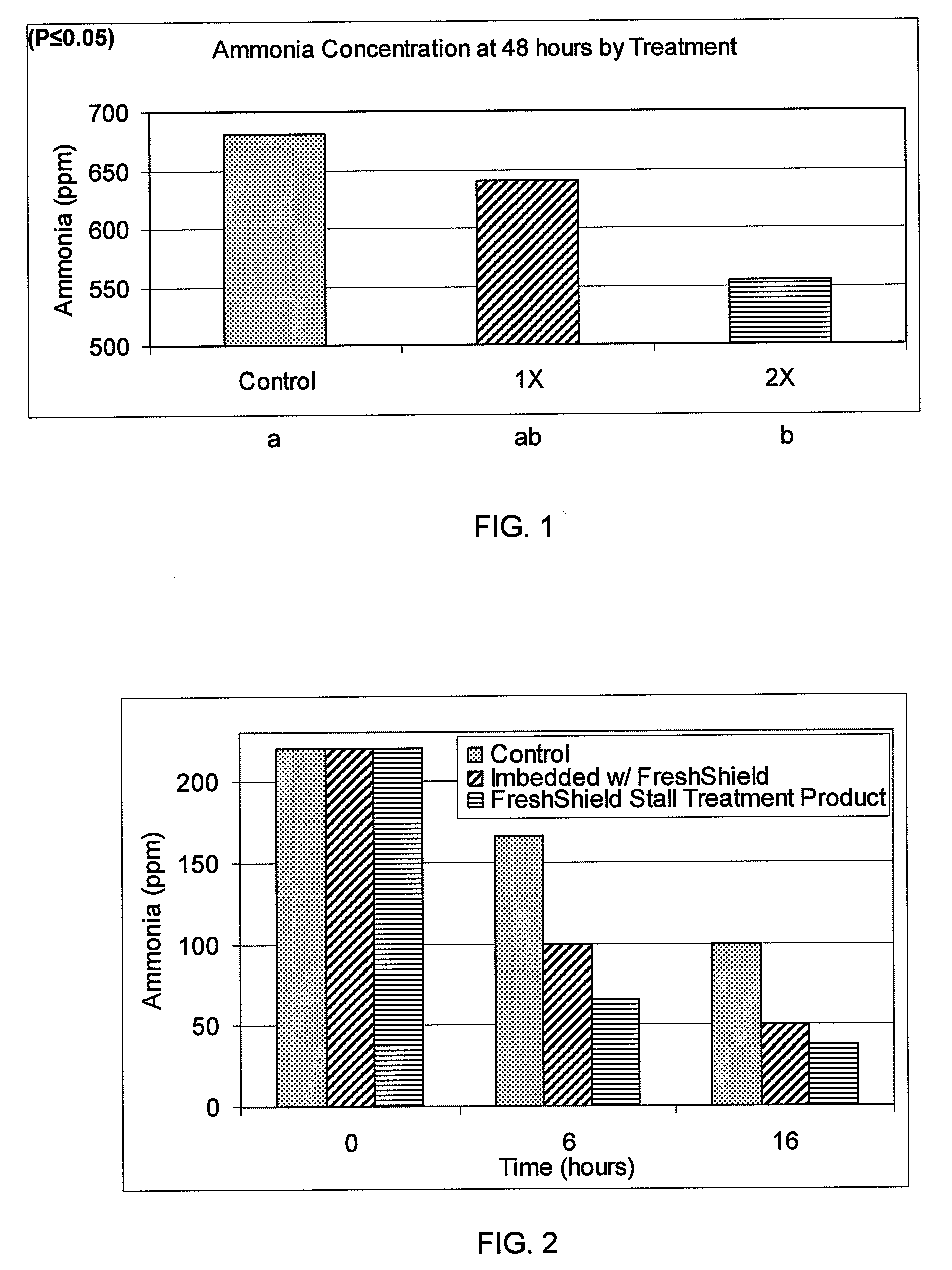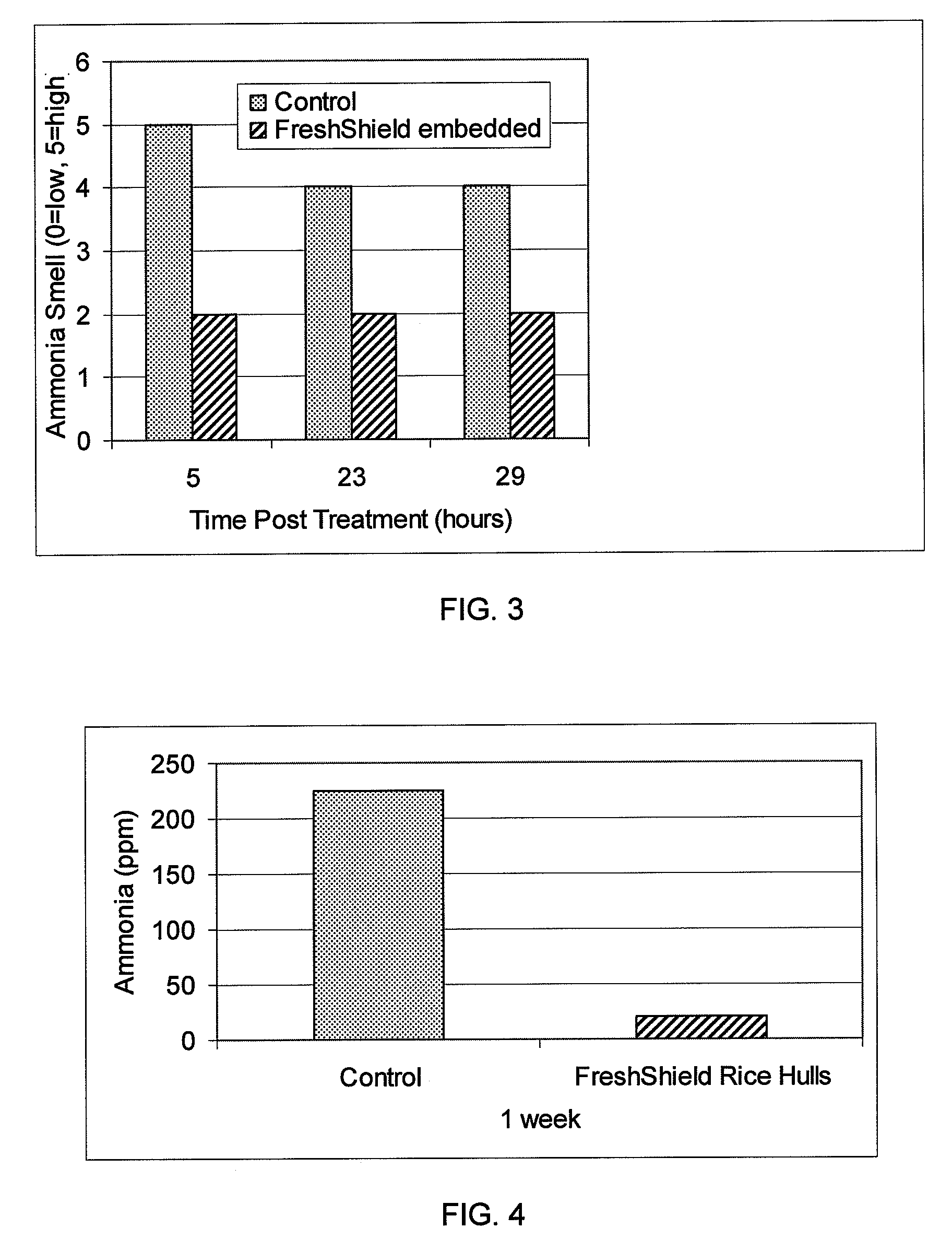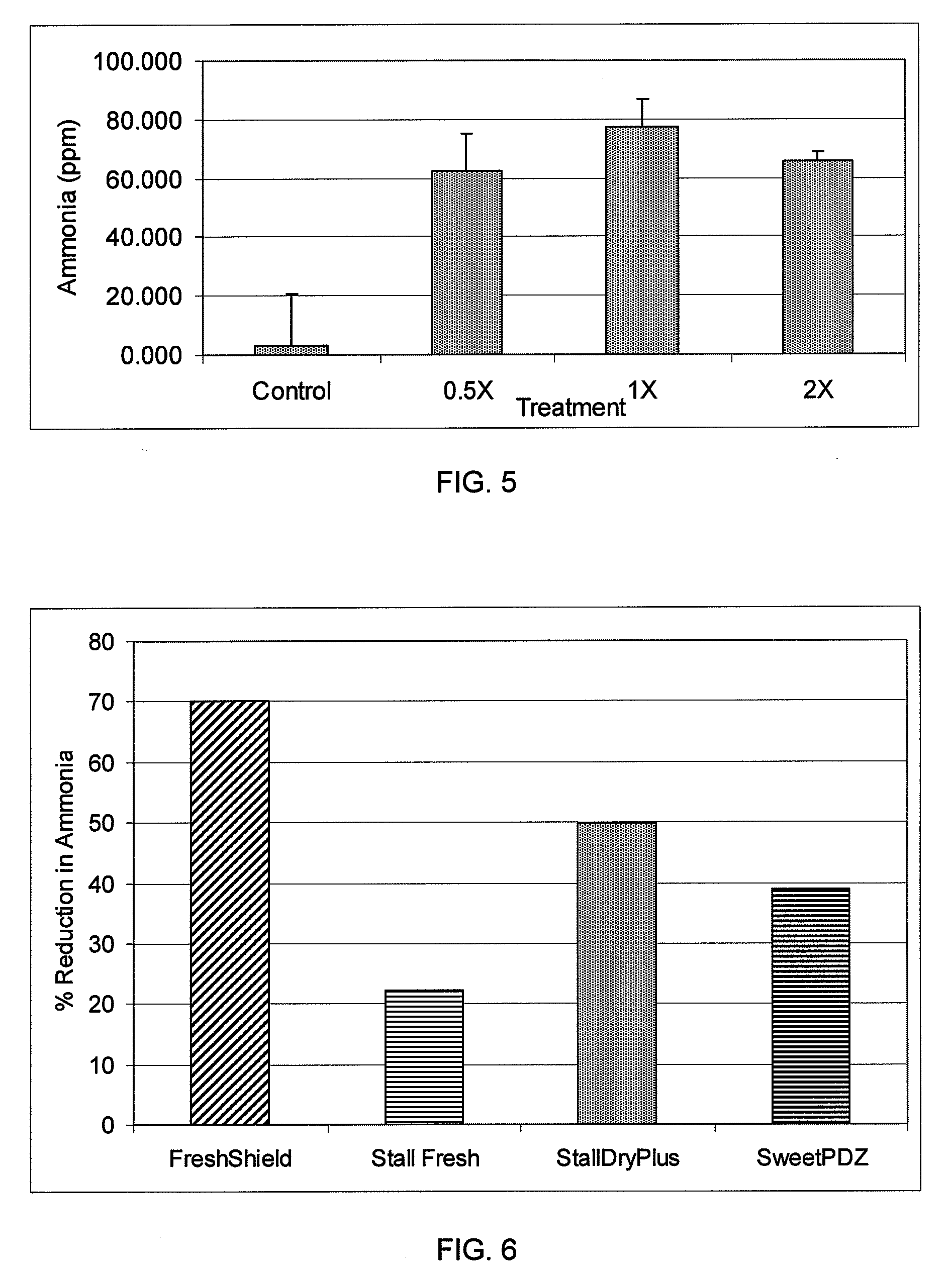Bacillus strains useful for animal odor control
a technology of bacteria and odor control, applied in the field of bacteria useful for animal odor control, can solve the problems of ammonia negatively affecting the health of stabled horses, neighbors, and owners, and the lik
- Summary
- Abstract
- Description
- Claims
- Application Information
AI Technical Summary
Benefits of technology
Problems solved by technology
Method used
Image
Examples
example 1
[0055]Overview: This research was conducted to determine the effectiveness of a horse waste product at lessening the odor associated with waste excretion in confined areas such as the common equine box stall.
[0056]Protocol: 12 horses housed in a barn were utilized to “soil” the stalls. Horses / stalls were blocked by age / ration / sex so that there were similar types of horses within each treatment. Horses were stalled for approximately 12 hours / day with daily turnout. The treatments were as follows: Control: Consisted of normal bedding practices per the protocols of the facility with 6 stalls and Bedding Treatment: In addition to normal bedding protocols, a top dress of a “horse waste product” applied to shavings was applied to selected stalls with 6 stalls. Bedding treatment was applied by spreading 1 (one) scoop (in this example, one (1) scoop equals 8.64×1010 total cfu of the Bacillus strains) of treatment material, which is prepared to contain 2.4×108 total cfu / g of B. subtilis stra...
example 2
[0060]Aim: To determine if FreshShield™ product will modulate the decomposition of manure mixed with Marth Easy Pick™ Bedding over time. This model utilized cow urine and cow fecal material.
[0061]Protocol: A waste in vitro model was prepared by placing 100 g of Marth Easy Pick™ bedding into each of fifteen 6″×9″×3″ Ziploc™ containers with a small hole drilled in one end. The hole was taped to reseal the container. 500 ml of freshly collected cow urine was added to each container followed by 50 g of freshly collected cow fecal matter. Three treatments were designated across the 15 containers with 5 replicates / treatment. Treatments consisted of control, containing no FreshShield™ product, and FreshShield™ product added at a 1× dose and a 2× dose. The 1× dose contained 3.12×109 CFU of the three Bacillus strains, i.e., B. subtilis strains 2084 and 27 and B. licheniformis strain 21, with the 2× dose containing twice that amount. After addition of all materials to the Ziploc containers, c...
example 3
[0064]Study Details: The following study was performed to show the effect of bedding containing the FreshShield™ product and having Baker's sugar, maltodextrin M100, and baylith as the carriers (formulated as shown in Table 1 above) and bedding treated with FreshShield™ stall treatment product having bentonite, Fuller'earch, mineral oil, and baylith as the carriers (formulated as shown in Table 2 above) to determine the effect of carriers on the ability of the product to control ammonia production. Both products included the three strains, B. subtilis strains 2084 and 27 and B. licheniformis strain 21, as shown in Tables 1 and 2. Soiled horse bedding material collected from a stable was placed into sealed containers. Treatments were applied at a rate of 1.0×1010 total cfu of the three strains of the bacteria in the FreshShield™ product per 500 grams of soiled bedding and at a rate of 10×1010 total cfu of the three strains of bacteria in the FreshShield™ stall treatment product. Ammo...
PUM
| Property | Measurement | Unit |
|---|---|---|
| humidity | aaaaa | aaaaa |
| time | aaaaa | aaaaa |
| time | aaaaa | aaaaa |
Abstract
Description
Claims
Application Information
 Login to View More
Login to View More - R&D
- Intellectual Property
- Life Sciences
- Materials
- Tech Scout
- Unparalleled Data Quality
- Higher Quality Content
- 60% Fewer Hallucinations
Browse by: Latest US Patents, China's latest patents, Technical Efficacy Thesaurus, Application Domain, Technology Topic, Popular Technical Reports.
© 2025 PatSnap. All rights reserved.Legal|Privacy policy|Modern Slavery Act Transparency Statement|Sitemap|About US| Contact US: help@patsnap.com



